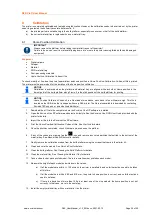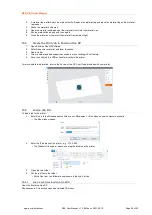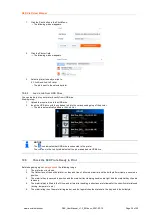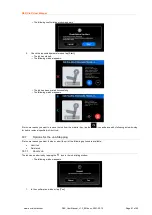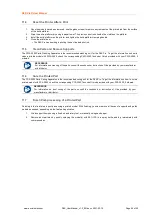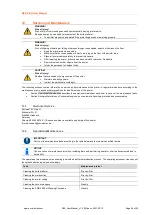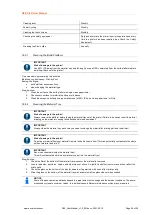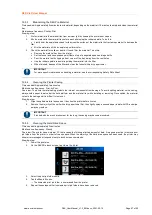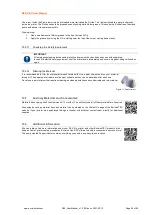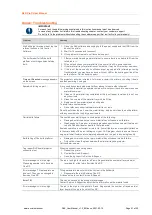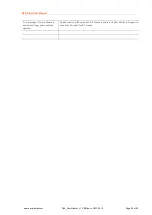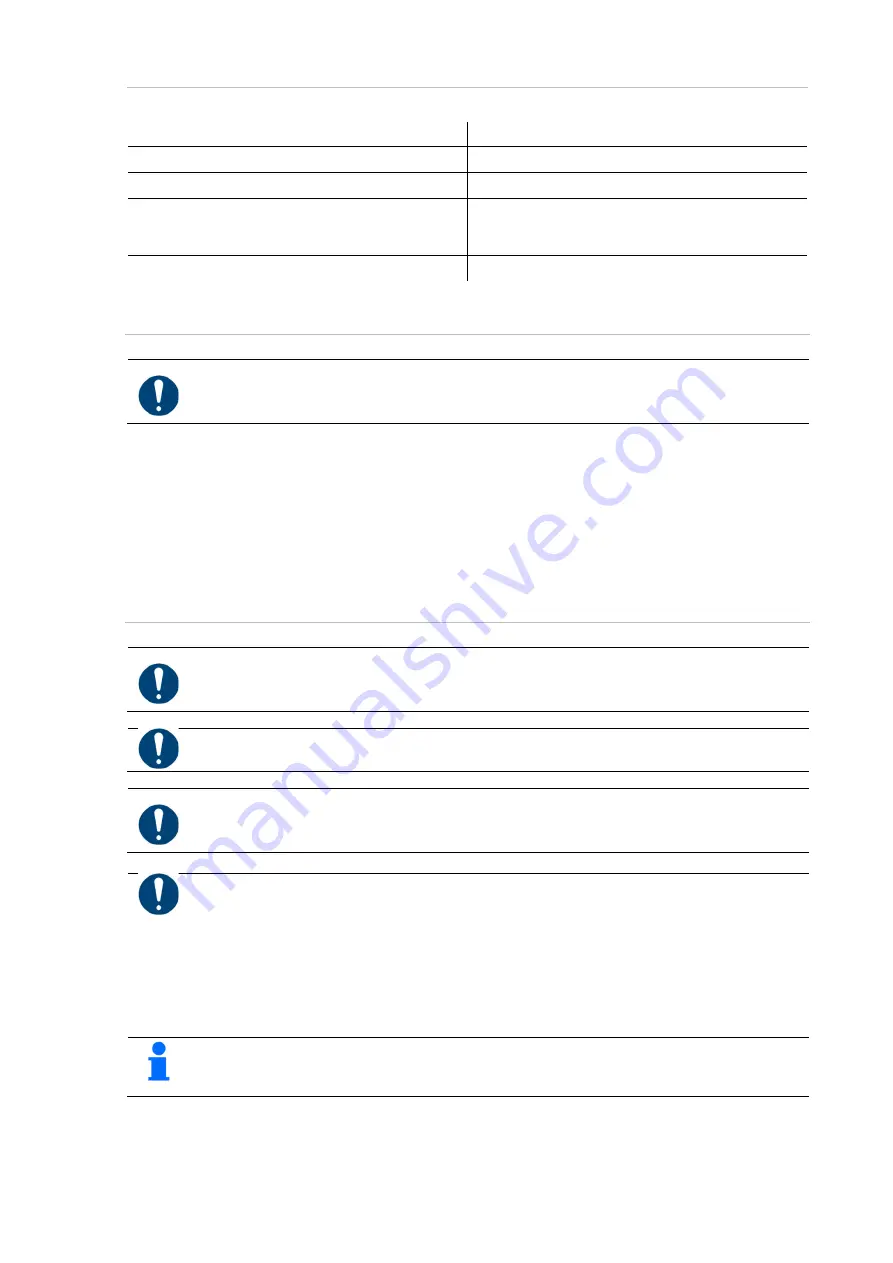
D4K Pro® User Manual
D4K_UserManual_v1.3_EN.docx, 2021-02-12
Page 46 of 52
Cleaning dust
Weekly
Power Cycling
Weekly
Cleaning the touch screen
Monthly
Checking the safety equipment
Daily and every time the printer is put into operation and every
time the printer has been repaired (see
Greasing the Z-axis slide
Annually
12.2.1
Cleaning the Build Platform
IMPORTANT
Risk of damage to the printer!
Use 99% IPA away from the material tray and thoroughly wipe all IPA completely from the build platform before
installing it back onto the printer!
Time needed:
Approximately two minutes
Maintenance frequency:
Print-by-Print
Seeing the Signs:
•
build platform becomes sticky
•
when changing the material type
Step-by-step:
1. Clean the surface of the build platform using a clean paper towel.
2. Check every surface for material, buildup, or stickiness.
3. Clean the excessive buildup using a small amount of 99% IPA on a clean paper towel or Q-tip.
12.2.2
Cleaning the Material Tray
IMPORTANT
Risk of damage to the printer!
Always remove the platform before taking the material tray out of the printer! Failure to do so can result in material
dripping on the projector causing failed builds and ruined equipment!
IMPORTANT
Always clean the material tray each time you need to change the material for printing parts on the printer!
IMPORTANT
Risk of damage to the printer!
Do not pour material from your material tray into the bottle it came from! This can potentially contaminate the whole
bottle of material and ruin it!
IMPORTANT
Never use chemicals inside the material tray!
This will contaminate and ruin any material you put into the material tray!
Step-by-step
:
1. Check the film at the bottom of the material tray whenever the material is removed.
2. Look for pinholes, punctures, ripples, and other signs of stress. A slightly cloudy film is normal and will not affect the
print quality.
3. Check the glass on the bottom of the tray for smears or fingerprints, which can affect print quality.
4. Wipe the glass on the bottom of the material tray with an ammonia-free glass cleaner when needed.
NOTICE
Some of the above-mentioned tasks depend to a great extent on the usage and the ambient conditions. The above-
mentioned cycles are minimum values. In individual cases, different maintenance cycles may be required




